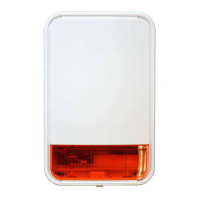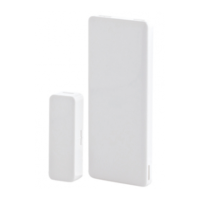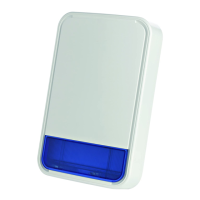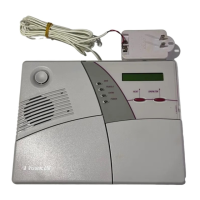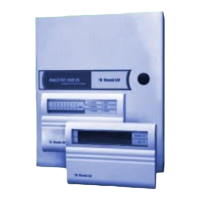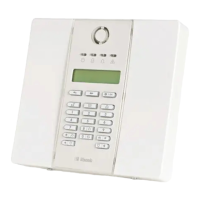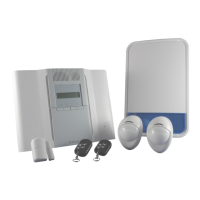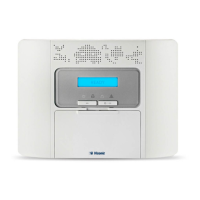SMD-426, SMD-427
D-302758 23
Figure 6. Recommended Best
and Acceptable Locations to
Mount Smoke Detectors
Figure 7. Recommended
Location to Mount Smoke
Detectors in Rooms with
Sloped, Gabled or Peaked
Ceiling
CAUTION (As required by the California State Fire
Marshall)
"Early warning fire detection is best achieved by the
installation of fire detection equipment in all rooms and
areas of the household as follows:
(1) A smoke detector installed in each separate sleeping area (in the vicinity, but outside the bedrooms), and (2)
Heat or smoke detectors in the living rooms, dining rooms, bedrooms, kitchens, hallways, attics, furnace rooms,
closets, utility and storage rooms, basements and attached garages."
3.3 Where Not to Install Smoke Detectors
False alarms occur when smoke detectors are installed where they will not work properly. To avoid false alarms,
do not install smoke detectors in the following situations:
• Combustion particles are by-products of something burning. Do not install smoke detectors in or near areas
where combustion particles are present, such as kitchens with few windows or poor ventilation, garages
where there may be vehicle exhaust, near furnaces, hot water heaters and space heaters.
• Do not install smoke detectors less than 6 meters (20 feet) away from places where combustion particles are
normally present, like kitchens. If a 20-foot distance is not possible, try to install the detector as far away from
the combustion particles as possible, preferably on the wall. To prevent false alarms, provide good ventilation
in such places.
IMPORTANT: Never try to avoid false alarms by disabling the detector.
• Do not mount smoke detectors in the path of fresh air intake. The flow of fresh air in and out can drive smoke
away from the smoke detector; thus reducing its efficiency. Figure 8 indicates the correct and incorrect locations
concerning this problem.
• Near paint thinner fumes.
• In close proximity to an automobile exhaust pipe; this will damage the detector.
• In damp or very humid areas or near bathrooms with showers. Moisture in humid air can enter the sensing
chamber, then turns into droplets upon cooling, which can cause false alarms. Install smoke detectors at least
3 meters (10 feet) away from bathrooms.
• In very cold or very hot areas, including unheated buildings or outdoor rooms. If the temperature goes above
or below the operating range of smoke detector, it will not work properly. Verify that the temperature range of
the detector falls within the Operating Temperature, (see chapter 2. Specifications).
• In very dusty or dirty areas, dirt and dust can build up on the detector's sensing chamber, to make it overly
sensitive.
• Additionally, dust or dirt can block openings to the sensing chamber and keep the detector from sensing
smoke.
• Near fresh air vents or very drafty areas like air conditioners, heaters or fans. Fresh air vents and drafts can
drive smoke away from smoke detectors.
• Dead air spaces are often at the top of a peaked roof, or in the corners between ceilings and walls. Dead air
may prevent smoke from reaching a detector. See Figures 6 and 7 for recommended mounting locations.
• In insect-infested areas. If insects enter a detector's sensing chamber, they may cause a false alarm. Where
bugs are a problem, get rid of them before putting up a detector.
• Near fluorescent lights, electrical "noise" from fluorescent lights may cause false alarms. Install smoke
detectors at least 1.5 meters (5 feet) from such lights.
• Smoke detection depends on the smoke density present in a room. Smoke density is greater in small
rooms, for the same amount of smoke, than in large rooms.

